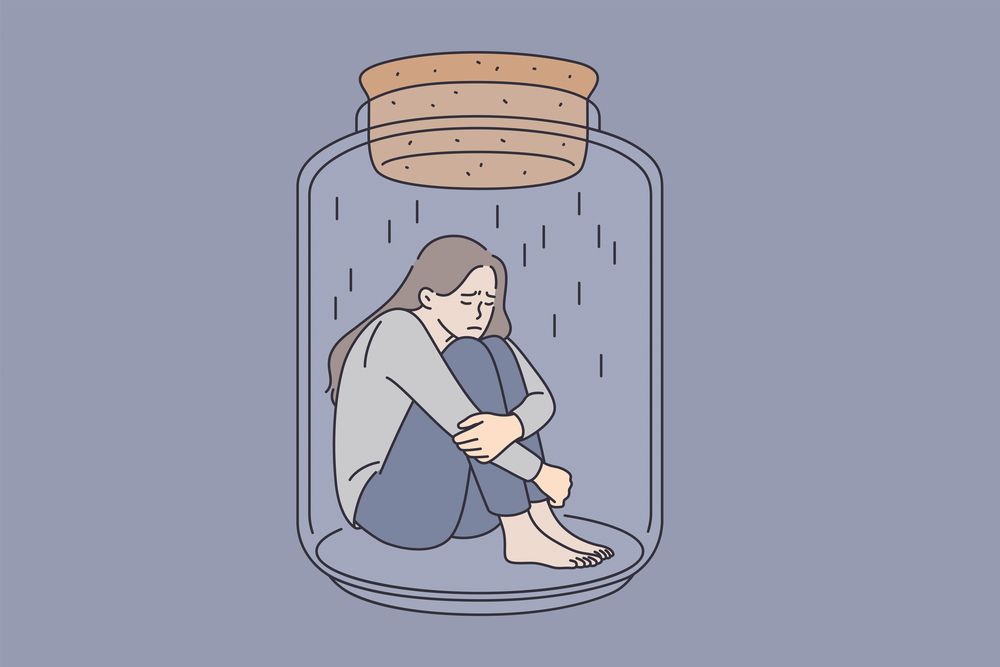Defensive styles refer to the predominant way an individual habitually employs defense mechanisms to cope with stress, anxiety, and internal conflicts.[1] It is a key aspect of personality and emotional regulation, shaping how a person interacts with the world, handles stress, and manages relationships.
Understanding Defensive Styles
Defense mechanisms[2] are unconscious psychological strategies that protect the individual from anxiety or uncomfortable emotions. Each person tends to rely on certain defenses more than others, creating a unique defensive style. These styles can range from adaptive (healthy) to maladaptive (unhealthy), influencing overall mental health and functioning.
Categories of Defensive Styles
- Primitive or Immature Defensive Style[3]:
-
-
- Denial: Refusing to accept reality or facts, often seen in individuals who avoid acknowledging distressing truths.[4]
- Projection: Attributing one’s own unacceptable thoughts or feelings to someone else, leading to misunderstandings or conflicts.[5]
- Splitting: Seeing things as all good or all bad, leading to extreme mood swings and unstable relationships.[6]
- Acting Out: Expressing unconscious emotions through actions rather than words, often resulting in impulsive or reckless behavior.[7]
-
- Neurotic Defensive Style[8]:
-
-
- Repression: Unconsciously pushing distressing thoughts and feelings out of conscious awareness.[9]
- Displacement: Shifting emotions or impulses from their original source to a safer or less threatening target (taking out frustration on a pet instead of a boss).
- Intellectualization: Using logic and reasoning to block out emotional stress and avoid dealing with the emotional aspect of a situation.[10]
- Reaction Formation: Behaving in a way that’s opposite to what one truly feels, such as being overly nice to someone one dislikes.
-
- Mature Defensive Style:[11]
-
-
- Sublimation: Channeling unacceptable impulses or emotions into socially acceptable or productive activities, such as engaging in sports or art.[12]
- Humor[13]: Using humor to deflect and cope with stress, allowing for a release of tension without creating additional conflict.
- Suppression: Consciously setting aside emotions or thoughts temporarily to deal with them later when one is better prepared.
- Altruism[14]: Managing one’s own stress by helping others, which can also foster positive relationships and a sense of purpose.
-
Impact of Defensive Style
- Relationships: An individual’s defensive style can significantly affect their relationships. For example, someone who frequently uses projection may have difficulty maintaining stable relationships because they often misinterpret others’ intentions. In contrast, someone who uses mature defenses like humor and altruism tends to build healthier, more supportive relationships.
- Mental Health: The type of defenses a person predominantly uses is often linked to their overall mental health. Those who rely on primitive defenses may be more prone to anxiety, depression, or personality disorders. On the other hand, those who use mature defenses generally exhibit better emotional resilience and psychological well-being.
- Personality Development: Defensive style is not static; it can evolve with personal growth, therapy, and life experiences. Over time, individuals may learn to replace immature defenses with more mature ones, leading to healthier coping mechanisms and better emotional regulation.
Assessing Defensive Style
- Clinical Tools: The Defense Style Questionnaire (DSQ) is one tool used by clinicians to assess an individual’s predominant defense mechanisms. This self-report inventory helps identify which defenses are most commonly employed by the person.
- Therapeutic Observation: Through therapy, clinicians observe how a person responds to stress and conflict in real-time, noting patterns in their defense usage.
Modifying Defensive Style
- Increasing Self-Awareness: Therapy can help individuals become more aware of their defensive patterns and how these affect their lives. With greater awareness, they can begin to consciously choose more adaptive defenses.
- Building Emotional Resilience: Developing coping strategies that involve mature defenses can enhance emotional resilience. Techniques like mindfulness, reflective practices, and stress management can support this growth.
- Gradual Change: Shifting from a maladaptive to an adaptive defensive style is often a gradual process. Therapy can provide a safe space for exploring and practicing new, healthier ways of handling emotional stress.
Conclusion
Defensive style is a crucial component of how we manage our inner worlds and interact with others. By understanding and, when necessary, modifying our defensive styles, we can improve our mental health, relationships, and overall quality of life. Engaging with these concepts in therapy or personal development can lead to lasting positive changes.
[1] Bond, Michael. “An empirical study of defensive styles: The Defense Style Questionnaire.” Ego mechanisms of defense: A guide for clinicians and researchers (1992): 127-158.
[2] Cramer, Phebe. “Understanding defense mechanisms.” Psychodynamic psychiatry 43.4 (2015): 523-552.
[3] Ma, Dandan, et al. “Immature defense mechanisms.” (2024).
[4] Wheeler, Sara, and Louann Lord. “Denial: A conceptual analysis.” Archives of Psychiatric Nursing 13.6 (1999): 311-320.
[5] Holmes, David S. “Projection as a defense mechanism.” Psychological bulletin 85.4 (1978): 677.
[6] Kramer, Ueli, et al. “Beyond splitting: Observer-rated defense mechanisms in borderline personality disorder.” Psychoanalytic Psychology 30.1 (2013): 3.
[7] Spiegel, Leo Angelo. “Acting out and defensive instinctual gratification.” Journal of the American Psychoanalytic Association 2.1 (1954): 107-119.
[8] Jeong, Hyun-Moo, et al. “Transdiagnostic Network Analysis Between Suicide Attempt and Personality, Defense Mechanism Factors in Neurotic Patients.” Psychoanalysis 33.3 (2022): 45-55.
[9] Erdelyi, Matthew Hugh. “The unified theory of repression.” Behavioral and Brain Sciences 29.5 (2006): 499-511.
[10] Bernard, M., et al. “Displacement, rationalization and intellectualization: evaluation of the main defense mechanisms in oncology clinicians.” Psycho-Oncologie 4 (2010): 47-50.
[11] Kazemian, R., and Kh Abolmaali Alhosseini. “Comparison of mature, immature, and neurotic defense mechanisms in veterans and normal people.” Iranian Journal of War and Public Health 10.4 (2018): 221-226.
[12] Ghazvini, Sayid Dabbagh, et al. “Sublimation, as a technique for treatment.” Procedia-Social and Behavioral Sciences 5 (2010): 1811-1817.
[13] Ostrower, Chaya. “Humor as a Defense Mechanism during the Holocaust.” Interpretation 69.2 (2015): 183-195.
[14] Sigmund, Karl, and Christoph Hauert. “Altruism.” Current Biology 12.8 (2002): R270-R272.

